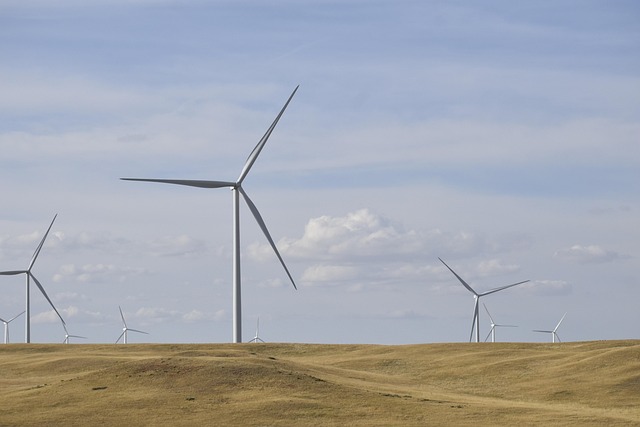Modern societies depend on a vast array of energy sources, from fossil fuels to renewable innovations. The way we generate and consume energy shapes the planet’s climate, influencing atmospheric composition, ocean temperature, and sea‑level rise. Understanding the interplay between energy production and rising sea levels is essential for creating resilient coastal communities and a sustainable future.
Energy Production: The Engine of Human Progress
Energy production has been the backbone of industrial development for over two centuries. Fossil fuels—coal, oil, and natural gas—have supplied the bulk of global electricity, heating, and transportation energy. Despite their economic benefits, these sources emit large amounts of greenhouse gases, driving climate change and its cascading effects on marine environments.
- Coal accounts for roughly 40% of global primary energy consumption.
- Natural gas, while cleaner than coal, still releases significant CO₂ during combustion.
- Oil remains the primary energy source for transportation, contributing to about 30% of total emissions.
The Rise of Renewable Energy Production
Renewable energy production—solar, wind, hydro, geothermal, and bioenergy—has surged in the past decade. These technologies reduce reliance on carbon‑intensive fuels, lowering greenhouse‑gas emissions and helping to mitigate climate change. However, the transition to renewables is complex, requiring grid upgrades, storage solutions, and policy support.
- Solar photovoltaic installations have doubled since 2010.
- Offshore wind farms now generate more electricity than onshore installations in some regions.
- Hydroelectric dams provide stability but can also influence marine ecosystems.
How Energy Production Influences Sea Levels
The primary mechanism linking energy production to sea‑level rise is the emission of greenhouse gases. When fossil fuels are burned, CO₂ and methane accumulate in the atmosphere, trapping heat and warming the planet. Warmer temperatures cause polar ice sheets and glaciers to melt, adding water to the oceans. Additionally, thermal expansion—when seawater heats up, it expands—further contributes to rising sea levels.
“The energy sector is both a driver of climate change and a key lever for mitigating its impacts,” notes climate scientists worldwide.
Quantifying the Impact of Fossil Fuel Energy Production
Global emissions from energy production account for approximately 75% of total CO₂ emissions. The largest contributor is electricity generation, where coal and natural gas dominate in many developing economies. As sea‑level rise accelerates, the vulnerability of coastal cities and low‑lying islands increases, prompting a reevaluation of energy policies.
- Electricity generation emits about 1.5 gigatons of CO₂ annually.
- Transportation accounts for nearly 30% of the remaining emissions.
- Industrial processes add another 12% to the global carbon budget.
Adapting Coastal Infrastructure to Rising Sea Levels
Coastal adaptation strategies must consider the dual challenge of continued energy production and sea‑level rise. Building resilient infrastructure—such as seawalls, elevated roads, and green buffers—reduces flood risk. Moreover, integrating renewable energy production into these structures, like floating solar farms or tidal turbines, can provide clean power while reinforcing coastal defenses.
Countries with high energy demand and significant coastal populations, such as Bangladesh, the Netherlands, and Indonesia, are investing in hybrid solutions that combine energy generation with sea‑level management.
Case Studies: Energy Production in Coastal Regions
Three illustrative examples demonstrate how energy production and sea‑level adaptation intersect:
- Florida, USA: The state’s offshore wind farms generate clean electricity while providing wave attenuation, protecting barrier islands from erosion.
- Singapore: The island nation is deploying floating solar panels on reclaimed land, reducing land use conflicts and offering renewable energy for its dense urban grid.
- Philippines: The use of tidal turbines in coastal zones supplies power to remote communities and helps maintain local fish habitats despite rising waters.
Policy and Market Drivers Shaping Energy Production
Governments worldwide are implementing policies to curb emissions from energy production. Carbon pricing, renewable subsidies, and stricter efficiency standards aim to reduce fossil‑fuel reliance. Simultaneously, the cost of renewable technologies has fallen dramatically, making clean energy production increasingly competitive.
Financial mechanisms such as green bonds and climate funds are channeling capital into projects that simultaneously lower emissions and enhance coastal resilience.
Future Outlook: Energy Production and Climate Resilience
Looking ahead, the trajectory of energy production will play a decisive role in the pace of sea‑level rise and the capacity of coastal communities to adapt. Transitioning to renewable energy production on a global scale can limit temperature increases to below 2°C, slowing ice melt and thermal expansion. Conversely, continued dependence on fossil fuels will likely push sea levels higher, exacerbating flood risk and displacing millions.
Integrating innovative technologies—such as carbon capture and storage, advanced battery systems, and smart grid management—into the energy production framework can accelerate the transition and provide a buffer against climate uncertainty.
Call to Action for Stakeholders
Governments, businesses, scientists, and communities each have a vital role in reshaping energy production to safeguard coastal environments. Key actions include:
- Investing in research and development for low‑carbon technologies.
- Implementing regulatory frameworks that prioritize emissions reduction and sea‑level adaptation.
- Engaging local populations in planning processes to ensure equitable and culturally appropriate solutions.
- Promoting education and public awareness about the links between energy production and sea‑level rise.
Conclusion: Harmonizing Energy Production with Ocean Health
Energy production and sea‑level rise are inextricably linked through the greenhouse‑gas emissions that warm the planet and melt ice. The shift toward renewable energy production offers a pathway to reduce emissions, limit temperature rise, and support resilient coastal infrastructure. By aligning energy policies with ocean‑health objectives, societies can navigate the challenges of climate change while securing a sustainable future for both people and the planet.




